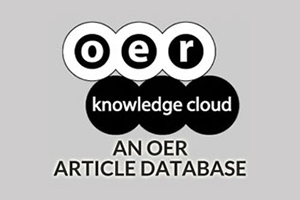Not All Rubrics Are Equal: A Review of Rubrics for Evaluating the Quality of Open Educational Resources
DOI:
https://doi.org/10.19173/irrodl.v16i5.2389Keywords:
Rubrics, Quality, Open Educational Resources, Content, Development Process, Application Context, SupportAbstract
The rapid growth in Internet technologies has led to a proliferation in the number of Open Educational Resources (OER), making the evaluation of OER quality a pressing need. In response, a number of rubrics have been developed to help guide the evaluation of OER quality; these, however, have had little accompanying evaluation of their utility or usability. This article presents a systematic review of 14 existing quality rubrics developed for OER evaluation. These quality rubrics are described and compared in terms of content, development processes, and application contexts, as well as, the kind of support they provide for users. Results from this research reveal a great diversity between these rubrics, providing users with a wide variety of options. Moreover, the widespread lack of rating scales, scoring guides, empirical testing, and iterative revisions for many of these rubrics raises reliability and validity concerns. Finally, rubrics implement varying amounts of user support, affecting their overall usability and educational utility.
Published
How to Cite
Issue
Section
License
This work is licensed under a Creative Commons Attribution 4.0 International License. The copyright for all content published in IRRODL remains with the authors.
This copyright agreement and usage license ensure that the article is distributed as widely as possible and can be included in any scientific or scholarly archive.
You are free to
- Share — copy and redistribute the material in any medium or format
- Adapt — remix, transform, and build upon the material for any purpose, even commercially.
The licensor cannot revoke these freedoms as long as you follow the license terms below:
- Attribution — You must give appropriate credit, provide a link to the license, and indicate if changes were made. You may do so in any reasonable manner, but not in any way that suggests the licensor endorses you or your use.
- No additional restrictions — You may not apply legal terms or technological measures that legally restrict others from doing anything the license permits.







